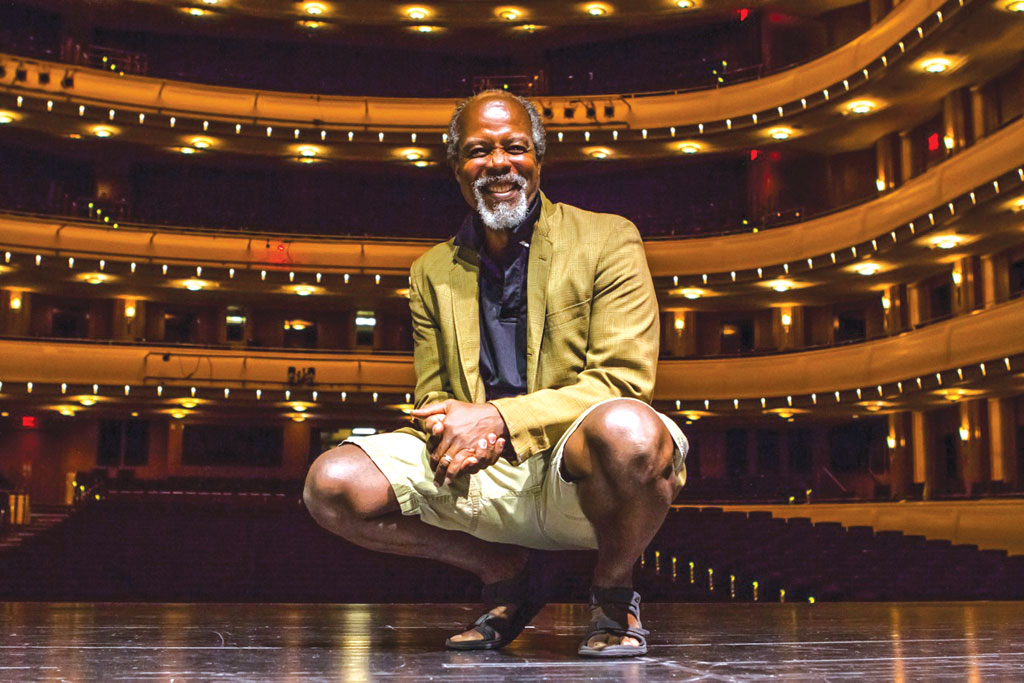By Gerry Strauss, ReMIND Magazine
He is an actor extraordinaire, a true gentleman and perhaps acting’s last true cowboy. Along with the legendary Chuck Norris, Washington native Clarence Gilyard starred in one of the most enduring ’90s series, Walker, Texas Ranger, and brought the TV Western to a brand-new generation as a result. By that point, Gilyard’s resumé was already impressive, thanks to high-profile gigs working alongside everyone from Jim Carrey (on the ill-fated Duck Factory) to Andy Griffith (he costarred on Matlock for four memorable seasons). Regardless, this enduring favorite clearly holds a special place in his heart for his time in the modern-day Wild West, even as he has toured the country for the past two years, starring in the stage version of Driving Miss Daisy.
One of the roles people remember you for is working on Matlock with Andy Griffith. What did a role like that mean to you, professionally and personally?
Clarence Gilyard: That particular role came after I decided I wasn’t going to do television anymore. I was going to focus on a film career even as a young African-American back then when most of us didn’t have any film careers. I had had a tough time on a television series before [Matlock] called The Duck Factory with Jim Carrey. NBC tanked the show even though it was a very, very good show. They had had some personality problems with the producers, and so to send the message to other producers in Hollywood, they tanked the show. It was a bit tough for me. I went into the Actors Studio style of training, and I just didn’t want to do television. My agent said, “You know, Andy Griffith is looking for a costar, so you need to go over there and meet on this.” They narrowed it down from however [many] hundred people wanted that role and flew me out to New York for a screen test with Andy Griffith. That’s the memorable thing about that. I had to go into the studio in New York with Andy Griffith, who came in from North Carolina to personally choose his costar on that show that was continuing after three years. I was really nervous because I had revered him as a child. I watched him on television religiously. I had to get through some nerves to just try to work with him in the screen test. Obviously, it all worked out great. I owe my career to him, I think, because he really started to mentor me over those four years, to be quite honest with you.
You are also well-remembered for your nine-year run on a modern-day Western called Walker, Texas Ranger. How did you enjoy the experience working on that show and working with Chuck Norris?
That was interesting because I’d left Andy and Matlock. I was getting ready to go back for the fifth year, but I started to feel that I could anchor a show myself. I was about to sell a show to CBS when my agent said, “You probably should wait because Chuck has a deal with the same network for 13 shows on the air — fair play,” which was unheard of. Back then, it meant if you sign the contract, whether they shot them all or showed them all, you’d get 13 checks. That was a good run. … To be honest with you, the role of Jimmy Trivette, I felt very strongly that at that time there really wasn’t anybody in the United States that could play that role because I was rodeoing. I was pretty much a cowboy at the time. I thought that that was going to be a pretty good fit. Chuck was over in Israel finishing up a film. He saw my stuff. I was coming off Die Hard, and he knew that the network was real strong on me. I had to fly in again from North Carolina to test with Chuck on a Saturday morning at CBS. Then I left and got back on a plane right after that with the gig. That was an interesting nine years. A really interesting nine years. The thing about that show which was groundbreaking is we did a movie every week. The amount of action we had, we did an action movie every week. We had a second team going all the time. We had a couple of cameras going. We were really packing in a lot of entertainment in those 50 minutes. People did get their money’s worth. Also, it was the return of the classic Western family, the lead cowboy and his sidekick and his love interest and then the comic relief from the elder guy. That was hearkening back to the early days of Westerns. In television, we just set it in a modern environment, but we were cowboys, and people still had a taste for that.
Brought to you by the publishers of ReMIND magazine, a monthly magazine filled with over 95 puzzles, retro features, trivia and comics. Get ReMIND magazine at 70% off the cover price, call 1-855-322-8784 or visit remindmagazine.com. ©2018 ReMIND magazine

